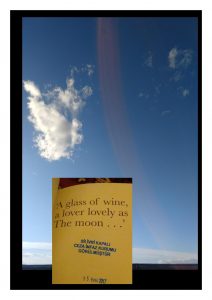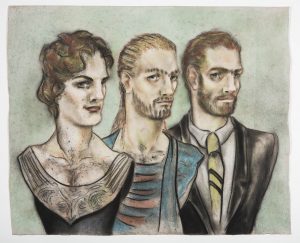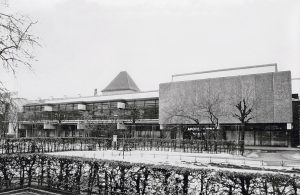Laressa Dickey
b. USA; lives in Sweden
Laressa Dickey is an artist, writer, and bodyworker living in Sweden. Through text, movement and daily life, her research focuses on presence, empathetic imagination, and embodied performance. She’s the author of four books of poetry, including the forthcoming Syncopations (Shearsman Books).
CONTRIBUTIONS
Laressa Dickey / Ali Gharavi
Inside-Outside: How to pass time with no reference, 2019
Installation, media and dimensions variable
Co-produced by Bergen Assembly 2019
Presented at Bergen Kjøtt
Inside-Outside: How to pass time with no reference explores the human experience of being on both sides of the prison walls due to unlawful state violence. Part video installation, sculpture, performance and documentation, this collaboration moves beyond the victimisation of state violence to poetically and artistically express the sensory perceptions of the artists’ separate but connected experiences.
Laressa Dickey and Ali Gharavi expose connections between our ordinary, human, daily experiences of life and beauty, and the overt and covert violence that exists in the world. They ask: How do we pass time when there is no point of reference? How do we survive under enormous external pressure and confinement? How do our perceptual experiences during crises form the way we see and re/view beauty? How can we use art to put our experiences into a larger story and into a very particular, embodied experience?
The installation attempts to express complexity within an assumed existing gap of perception: between that on the inside and that on the outside, as well as between those lived experiences and those of the audience that passes through the installation.
Laressa Dickey / Magdalena Freudenschuss
re:assembling emotional labour, 2019
5 texts; design by NLF, Berlin and Hamburg
Co-produced by Bergen Assembly 2019
Presented at KODE 1 Permanenten / Salon and Belgin
re:assembling emotional labour is a process of re:appropriation and an exploration of emotions and emotional labour in the context of political imprisonment. Laressa Dickey and Magdalena Freudenschuss ‘re:work’ their experiences during 2017 as partners of political prisoners. Five thin booklets offer glimpses into the artistic processing of those experiences. ‘Re:assembling’ goes along with ‘dis:assembling’; the dis:assembly intended by state violence is subverted by the attempt to ‘re:write’ the fabric of self, identity and togetherness.
Addressing themes such as the politics of care, anger as tool, suffering as a unit of measurement, failure as possible transformative moment, and contortions as a dynamic of power and trauma, Dickey and Freudenschuss insist on making space for the invisible work and suffering that is inherent in family crisis. At the same time they invite a critical re-reading, re: assembling emotions like grief, anger, pain, and sadness by looking for the strength, laughter, privilege, solidarity, sisterhood, and paradoxes
in all this. By means of text production, this re: assembling process follows the depths and heights of building resilience to trauma as a means of resisting state violence. Feminist perspectives are tools, motivations, references and good company on that path.
Artist and writer Laressa Dickey and sociologist and political educator Magdalena Freudenschuss involuntarily took a crash course in crisis management and coping with state repression in 2017 when their partners became political prisoners. Together with their partners, Ali Gharavi and peter steudtner,
they use art and activism to rework these experiences in different projects. For the Bergen Assembly, Dickey and Freudenschuss collaborated on five texts on the politics of care.
RELATED EVENTS
re:assembling emotional labour (presentation and Q&A, 30’)
re:assembling emotional labour is a process of re:appropriation and exploration of emotions and emotional labour in the context of political imprisonment. Laressa Dickey and Magdalena Freudenschuss re:work their experiences during 2017 as partners of political prisoners, as part of Bergen Assembly. Re:assembling goes along with dis:assembling; the dis:assembly intended by state violence is subverted by producing images of humour, strength, and togetherness, within the frame of the photoautomat. By means of text production, this re:assembling process follows the depths and heights of resilience, resistance, and trauma. Feminist perspectives are tool, motivation, and reference on that path.
RELATED PLATFORMS
Exhibition
The Parliament of Bodies




